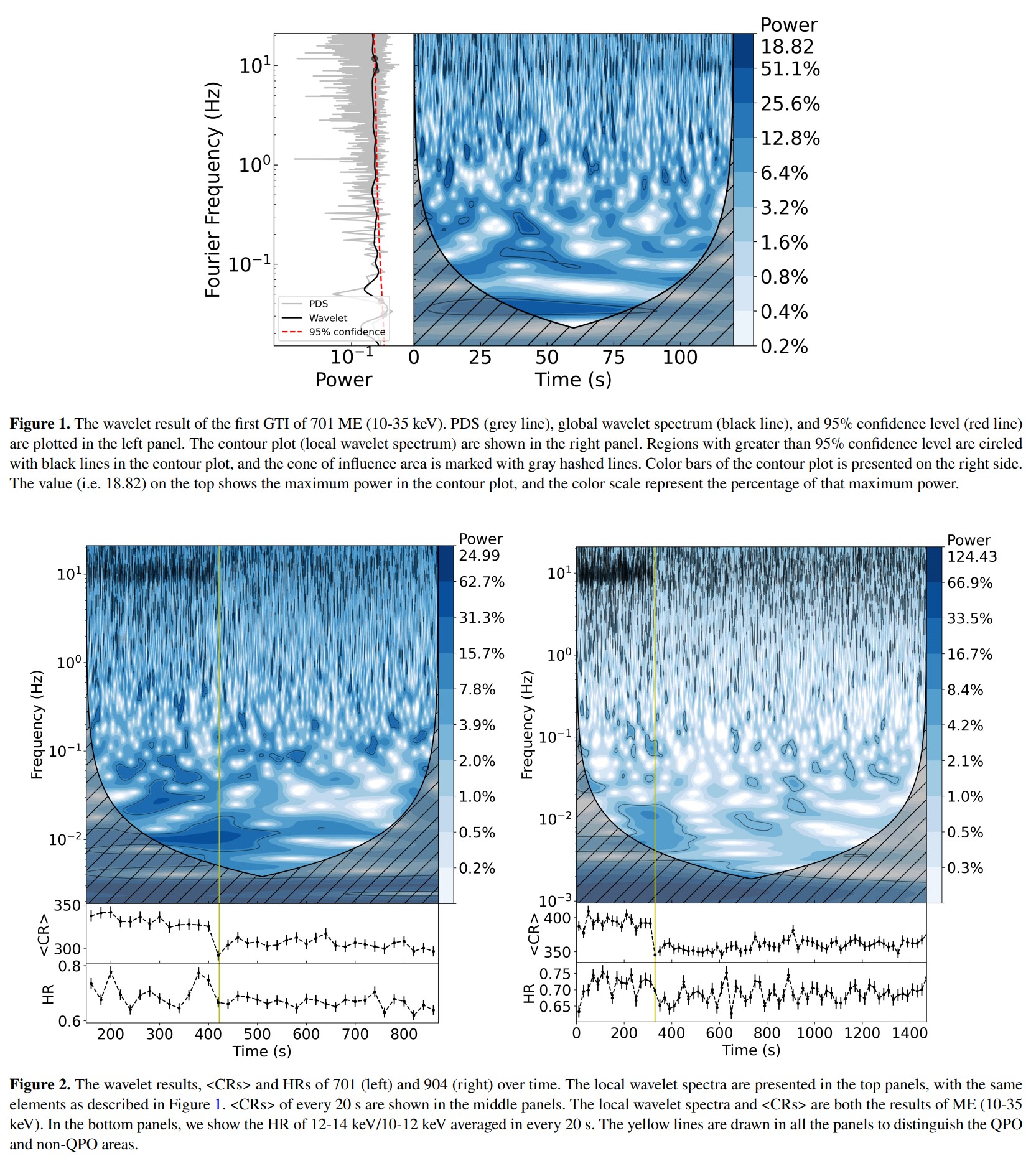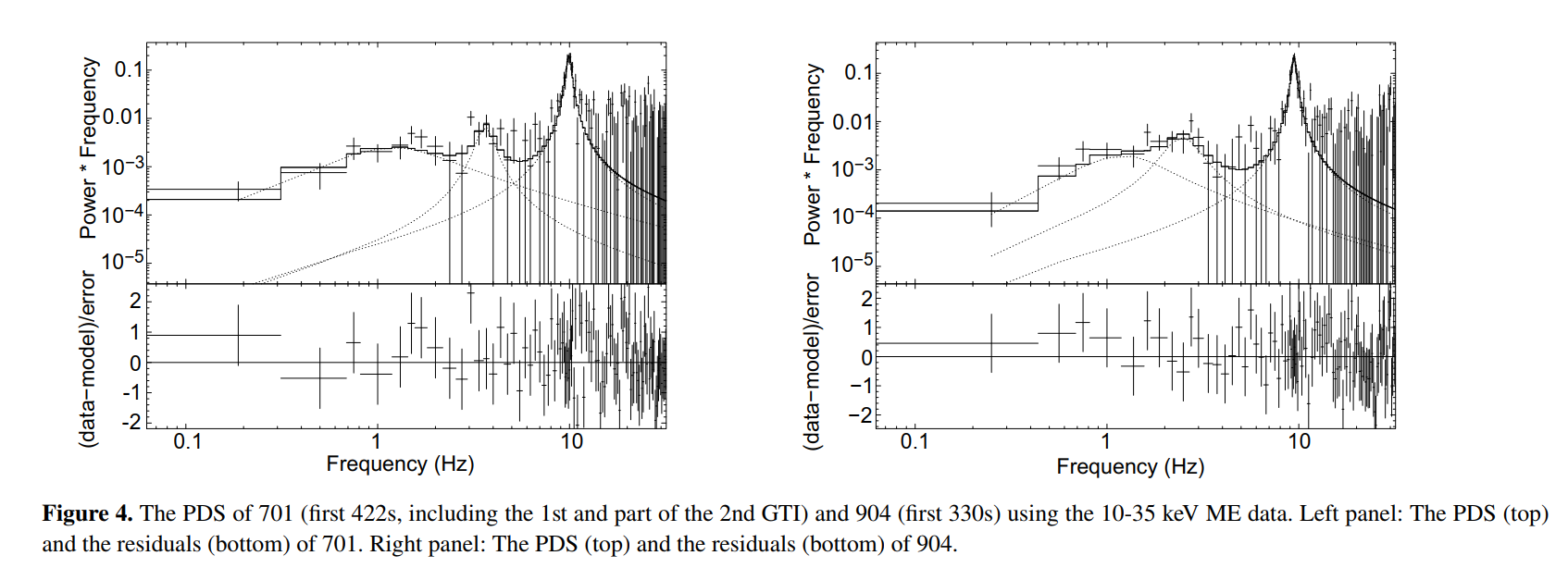小波分析找周期的方法应用到一个QPO上
Using wavelet analysis and power density spectrum, we investigate two transient quasi-periodic oscillations (QPOs) observed in MAXI J1535


We studied the millihertz quasi-periodic oscillation (mHz QPO) in the 2020 outburst of the Be/X-ray binary 1A 0535+262 using Insight-HXMT data over a broad energy band. The mHz QPO is detected in the 27-120 keV energy band. The QPO centroid frequency is correlated with the source flux, and evolves in the 35-95 mHz range during the outburst. The QPO is most significant in the 50-65 keV band, with a significance of ~ 8 sigma, but is hardly detectable (<2 sigma) in the lowest (1-27 keV) and highest (>120 keV) energy bands. Notably, the detection of mHz QPO above 80 keV is the highest energy at which mHz QPOs have been detected so far. The fractional rms of the mHz QPO first increases and then decreases with energy, reaching the maximum amplitude at 50-65 keV. In addition, at the peak of the outburst, the mHz QPO shows a double-peak structure, with the difference between the two peaks being constant at ~0.02 Hz, twice the spin frequency of the neutron star in this system. We discuss different scenarios explaining the generation of the mHz QPO, including the beat frequency model, the Keplerian frequency model, the model of two jets in opposite directions, and the precession of the neutron star, but find that none of them can explain the origin of the QPO well. We conclude that the variability of non-thermal radiation may account for the mHz QPO, but further theoretical studies are needed to reveal the physical mechanism.


